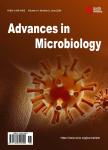Phenotypic and Genotypic Characterization of Extended Spectrum Beta-Lactamases Producing Bacteria Causing Urinary Tract Infections among Expectant Women Attending Antenatal Clinic at Ruiru Sub County Hospital, Kenya
Phenotypic and Genotypic Characterization of Extended Spectrum Beta-Lactamases Producing Bacteria Causing Urinary Tract Infections among Expectant Women Attending Antenatal Clinic at Ruiru Sub County Hospital, Kenya作者机构:Department of Medical Microbiology College of Health Science Jomo Kenyatta University of Agriculture and Technology Nairobi Kenya
出 版 物:《Advances in Microbiology》 (微生物学(英文))
年 卷 期:2023年第13卷第12期
页 面:571-587页
学科分类:100208[医学-临床检验诊断学] 1002[医学-临床医学] 10[医学]
主 题:Urinary Tract Infections Resistant Genes Genotypic Phenotypic Extended Spectrum Beta Lactamases
摘 要:Background: Urinary tract infection (UTI) is a bacterial infection affecting males and females but is more prevalent in expectant women. ESBLs are bacteria with enzymes that make them resistant to many antibiotics, posing a significant health challenge. This study aims to determine the characteristics of ESBL-producing bacteria causing UTIs in expectant women. Methodology: A self-administered survey was carried out;300 expectant women were recruited using a random sampling method. A questionnaire was used to collect socio-demographic information. Urine samples were collected in sterile universal bottles and processed at the JKUAT Zoology laboratory. Urine samples were analyzed using urinalysis, microscopy, culture, and sensitivity testing. ESBL-producing bacteria were identified phenotypically using the double-disc synergy test (DDST) and genotyped for specific resistant genes using PCR. Results: UTI prevalence was 32.7% (98/300). UTI was significantly associated with the history of previous UTI (OR = 0.84, p = 0.02) and multigravida (OR = 0.14 p = 0.01). UTI was common in women aged between 28-37 years in their second trimester. Bacteria isolated were E. coli 57.1% (56/98), S. aureus 21.4% (21/98) K. pneumonia 11.2% (11/98) and Proteus spp 10.4% (10/98). Bacteria antibiotic resistance patterns were E. coli-tetracycline (91.1%), sulfamethoxazole (55.4%), cefotaxime (53.4%) and augmentin (53.4%). S. aureus-sulfamethozaxole (100%) and augmentin (71.4%), K. pneumoniae-sulfame-thoxazole (72.2%) cefotaxime (63.6%), chloramphenicol and tetracycline (54.5%). Proteus spp: tetracycline (100%), nitrofurantoin (90%), cefotaxime and chloramphenicol (50%). The proportion of ESBLs bacterial producers was 37.6% (29/77) and 44.8% (13/29) possessed ESBLs resistant genes;Bla CTX-M 53.8% (7/13), Bla SHV and Bla TEM 23.1% (3/13) each, Bla OXA (0%) was not detected. Conclusion: The study revealed a high proportion of ESBLs producing bacteria responsible for UTI in expectant women. ESBLs



